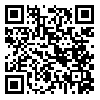Volume 79, Issue 9 (December 2021)
Tehran Univ Med J 2021, 79(9): 681-686 |
Back to browse issues page
Download citation:
BibTeX | RIS | EndNote | Medlars | ProCite | Reference Manager | RefWorks
Send citation to:



BibTeX | RIS | EndNote | Medlars | ProCite | Reference Manager | RefWorks
Send citation to:
Molaei H, Nemati E, Shojaeefar E, Khedmat L. Prevalence of skin lesions in patients after kidney transplantation referred to Baqiyatallah hospital. Tehran Univ Med J 2021; 79 (9) :681-686
URL: http://tumj.tums.ac.ir/article-1-11434-en.html
URL: http://tumj.tums.ac.ir/article-1-11434-en.html
1- Trauma Research Center, Faculty of Medicine, Baqiyatallah University of Medical Sciences, Tehran, Iran.
2- Nephrology and Urology Research Center, Faculty of Medicine, Baqiyatallah University of Medical Sciences, Tehran, Iran.
3- Immunology Board for Transplantation and Advanced Cellular Therapeutics (ImmunoTACT), Universal Scientific and Education Network (USERN), Tehran, Iran.
4- Departmenmt of Preventive Medicine, Faculty of Medicine, Health Management Research Center, Baqiyatallah University of Medical Sciences, Tehran, Iran. ,leilakhedmat@yahoo.com
2- Nephrology and Urology Research Center, Faculty of Medicine, Baqiyatallah University of Medical Sciences, Tehran, Iran.
3- Immunology Board for Transplantation and Advanced Cellular Therapeutics (ImmunoTACT), Universal Scientific and Education Network (USERN), Tehran, Iran.
4- Departmenmt of Preventive Medicine, Faculty of Medicine, Health Management Research Center, Baqiyatallah University of Medical Sciences, Tehran, Iran. ,
Abstract: (1931 Views)
Background: Immunosuppressive drugs that are widely used to prevent acute and chronic organ rejections, predispose organ transplant patients to a variety of diseases including skin problems. This study aimed to determine the prevalence of skin lesions and to investigate their association with demographic characteristics in renal transplant patients.
Methods: This cross-sectional study was performed on 100 patients who were referred to the nephrology clinic of Baqiyatallah Hospital, Tehran, Iran and underwent kidney transplantation within a year (from the first working day of the Iranian Hijri calendar in April 2015 until the last working day in March 2016). Patients were referred to a dermatologist in case of any skin lesions. Patients' data were collected in a researcher-made questionnaire and were analyzed using SPSS software, version 18. The p values less than 5% were considered to be significant.
Methods: This cross-sectional study was performed on 100 patients who were referred to the nephrology clinic of Baqiyatallah Hospital, Tehran, Iran and underwent kidney transplantation within a year (from the first working day of the Iranian Hijri calendar in April 2015 until the last working day in March 2016). Patients were referred to a dermatologist in case of any skin lesions. Patients' data were collected in a researcher-made questionnaire and were analyzed using SPSS software, version 18. The p values less than 5% were considered to be significant.
|
Results: The mean and standard deviation (SD) of the patients' age was 50/4±11/8 years. The average time of incidence of skin lesion after transplantation has been 8/1 ± 5/7 weeks. The most common types of non-melanoma cancers were squamous cell carcinoma (2%) and Kaposi's sarcoma (4%) and there was no significant difference between men and women (p>0.05). Sixty-six percent of the patients had skin infections and the most common skin infections were wart (34%) and tinea versicolor (11%). The relative frequency of skin infections was significantly higher in male patients than in females (p=0.004). Considering all other confounding variables including smoking, hypertension, diabetes and other infectious diseases, the only noteworthy finding was the higher relative frequency of tinea versicolor in diabetic compared with non-diabetic patients (p=0.046).
Conclusion: This study showed that skin complications including various neoplastic (Sarcoma and Carcinoma), infectious (fungal and viral), and other (Acne and Hypertrichosis) diseases are common in patients with kidney transplantation who are taking immunosuppressive drugs. Informing these patients and medical staff about skin problems leads to an early referral of patients and increases their life expectancy and improves their quality of life. |
Type of Study: Original Article |
Send email to the article author
| Rights and permissions | |
 |
This work is licensed under a Creative Commons Attribution-NonCommercial 4.0 International License. |





